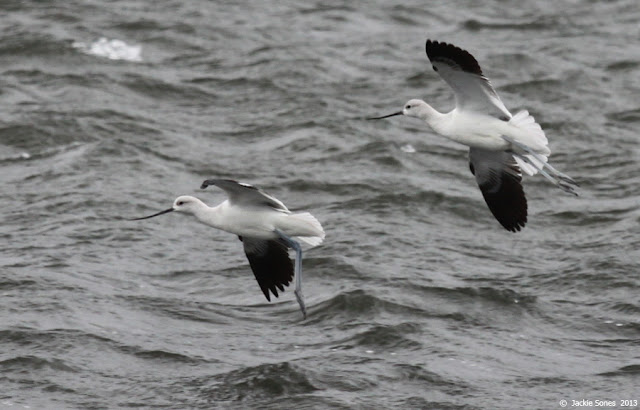Leaving Doran Beach yesterday, I looked off to the side and noticed a small flock of American Avocets (Recurvirostra americana) in the tidal pond at the start of Doran Beach Road.
Avocets are beautiful shorebirds with striking black-and-white plumage, a very long recurved (upturned) bill, and long blue-gray legs. (During the breeding season they'll develop cinnamon coloration on their heads and necks.)
On 9 January 2013, I counted thirteen American Avocets — see next photo.
Although it was very windy and there were even small whitecaps on the pond, the avocets appeared to be feeding. Avocets are known to capture prey by "scything," swiping their bills from side to side to catch invertebrates and small fish. But they use other methods and at this time they were swimming and surface plunging, submerging their heads and necks underwater.
Although American Avocets may be observed on this pond in winter, most apparently leave the coast by February. [I think the closest nesting location is Shollenberger Park in Petaluma.]
I was curious about the word "avocet." The Dictionary of American Bird Names (Choate and Paynter 1985) says that it's "quite possibly from the Latin avis...suggesting small and graceful." I agree with graceful, but American Avocets are fairly large shorebirds, 43-47 cm (17-18.5 inches) long.
P.S. Happy Birthday, Romie!





No comments:
Post a Comment